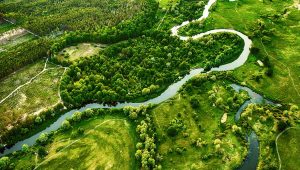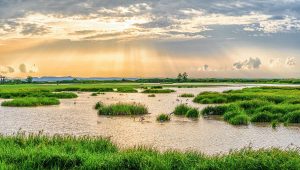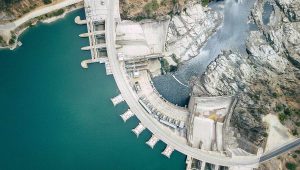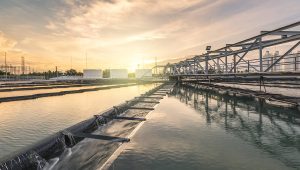What is the role of water in land-based climate mitigation? 3 questions to Malin Lundberg Ingemarsson and Lan Wang Erlandsson
Mitigation measures in land systems can have notable synergies but also trade-offs with local-to-regional water sustainability goals. At a webinar on 30 March Malin Lundberg Ingemarsson and Lan Wang Erlandsson will present why it is critical to consider water for land-based climate mitigation strategies.
In a series of five webinars, SIWI and fellow experts will explore how water can be used more effectively as a tool to mitigate climate change. Each webinar explores a different sector, with insights based on new research summarized in the landmark report The essential drop to reach net-zero: Unpacking freshwater’s role in climate mitigation.
On 30 March, the focus is on land-systems. We asked report authors, Malin Lundberg Ingemarsson of SIWI and Lan Wang Erlandsson of the Stockholm Resilience Centre, to explain why this perspective is so important.
Why do we need to consider water for land-based climate mitigation strategies?
Land systems play a critical role in the regulation of greenhouse gases. All scenarios that limit global warming to 1.5 degree include climate change mitigation measures in land systems, such as prevention of deforestation and forest degradation, reforestation/afforestation, and land management approaches. However, realizing the mitigation potential of land-based measures is not possible without available freshwater and functional water cycle dynamics. In some parts of the world, tropical rainforests have already peaked in terms of their net carbon sink strength, and the Amazon rainforest might become a net carbon source within the next few decades as the region becomes even drier.
At the same time, ecosystems are also generators of rainfall and regulators of streamflows. This means that any intervention on land inevitably impacts the water cycle. Forests can create rainfall. Around 60 percent of evapotranspiration over land falls down again as precipitation over land, and much more in some regions and seasons. As such, prevention of deforestation as a climate mitigation measure has both local carbon storage effects and the potential to multiply the carbon mitigation benefits by sustaining downwind rainfall over other ecosystems. Forestation impacts on local hydrology vary greatly depending on plantation strategies, local contexts and forest management – on the one hand, trees enhance infiltration, improve soil and prevent flooding, and on the other hand, they can deplete groundwater reserves and reduce water yields. The importance of system thinking becomes even clearer as one considers how diversely land and water functions support both societies and ecosystems locally and remotely.
“The importance of system thinking becomes even clearer as one considers how diversely land and water functions support both societies and ecosystems locally and remotely.”
Climate change has caused several places to periodically have less or more than needed water. Imagine how long dry spells start to alter a landscape where forests degrade and crops in agricultural fields start to die off. When this happens, the flora emits excessive amounts of carbon, rather than absorbing it. Therefore, the vegetation loses its ability to act as carbon sink but instead become a source of green-house gas emissions.
This is why it is critical to consider water in mitigation strategies and ensure that soils are healthy enough to hold the moisture needed in agriculture, and the ground holds enough water for the roots of trees to dig deeper during absence of rainwater. The same action can further help to ensure a functional water cycle by leaving enough water for evaporation and rainfall.
Why should people watch the webinar?
The webinar sums up some of the key water issues to be considered in policy-making and planning of land-based climate mitigation measures. With the latest scientific insights and case studies, we dig deeper into the relationship between land, water and climate change.
Participants will get the scientific evidence basis for why water is so fundamental to consider in land-based interventions – whether it is agriculture, agroforestry, landscape management or ecosystems and forest conservation and restoration.
We are hoping to inspire them to pursue water-wise ways to achieve mitigation goals.
What should people do afterwards? What is your call to action?
We are hoping that the knowledge we share will encourage others to holistically account for intertwined land-water-climate dynamics in the planning of land-based climate change mitigation measures.
- Conservation professionals should ask critical questions concerning water and hydrological flows within their work and projects when it comes to land-based mitigation.
- Researchers can conduct further case studies into developing water-wise strategies based on the existing work on this report and present success stories.
- Project developers and managers should make informed management decisions that factor in important freshwater aspects.
- Governments should consider close work between forest, water and agriculture departments to effectively mitigate climate change impacts in their respective regions.
Land-based mitigation measures can be a boon if done right, but failure to consider water aspects can easily lead to costly mistakes and detrimental social-ecological impacts. To achieve sustainability across all dimensions, the importance of systems thinking through integrated approaches cannot be stressed enough.

















